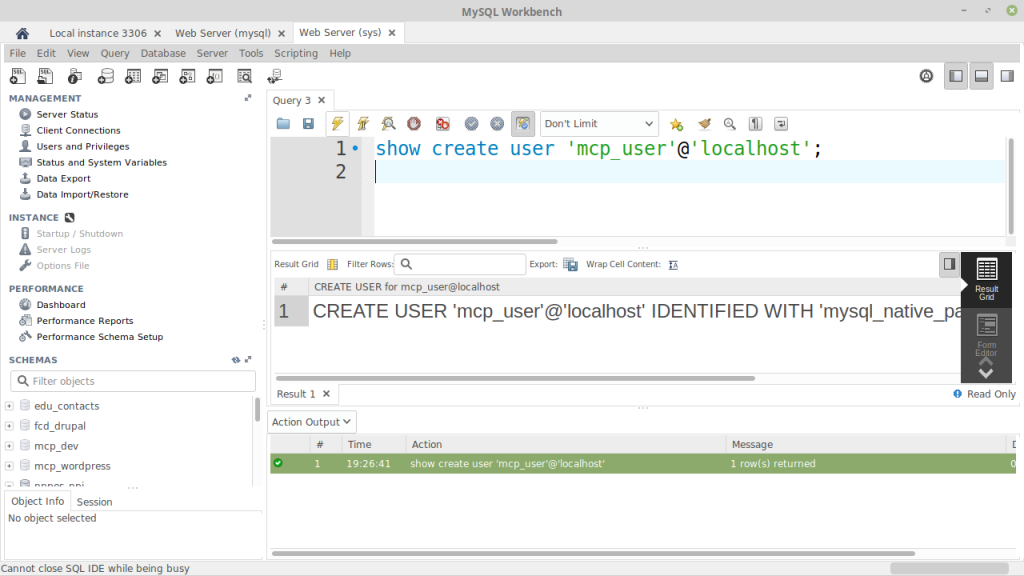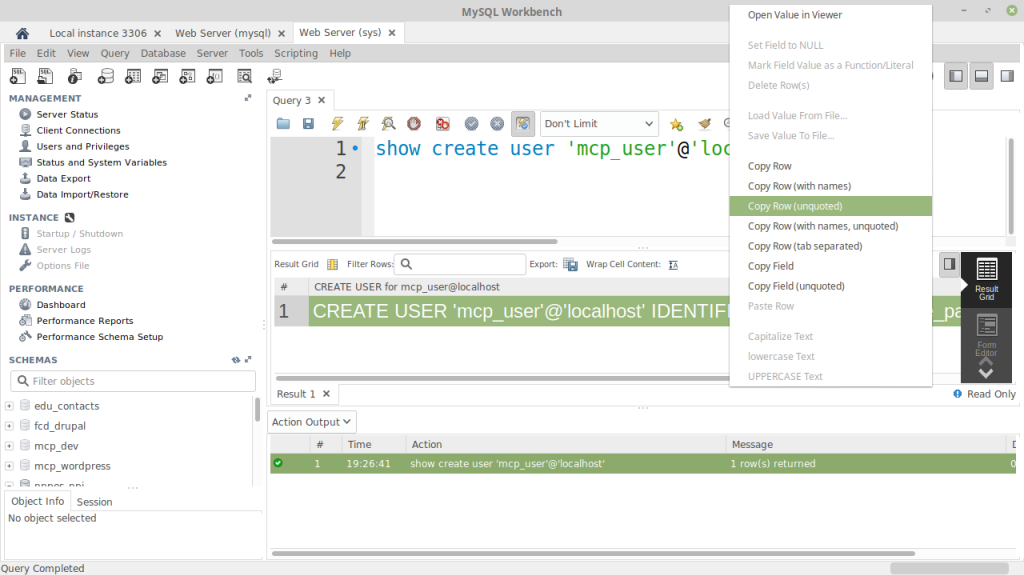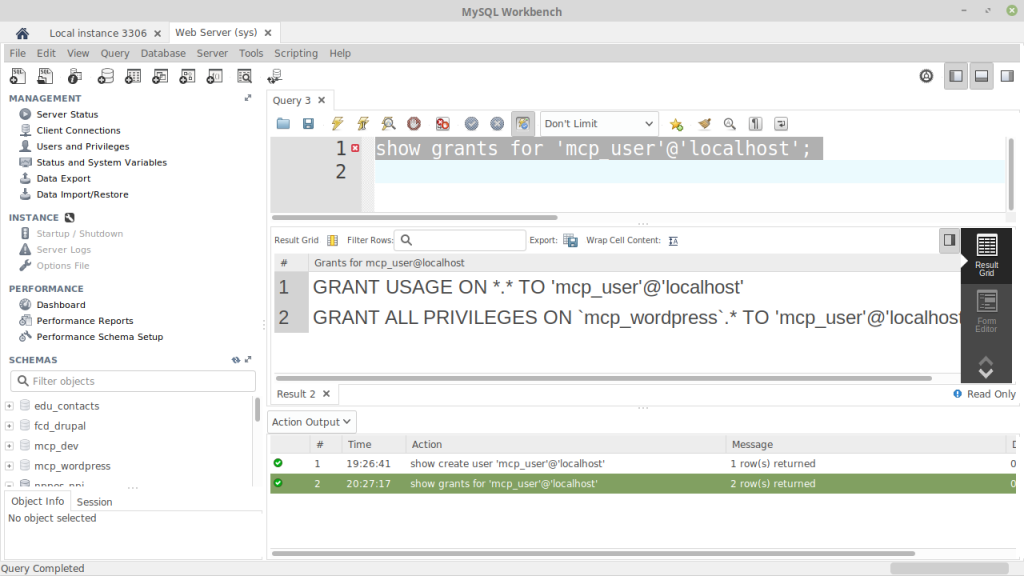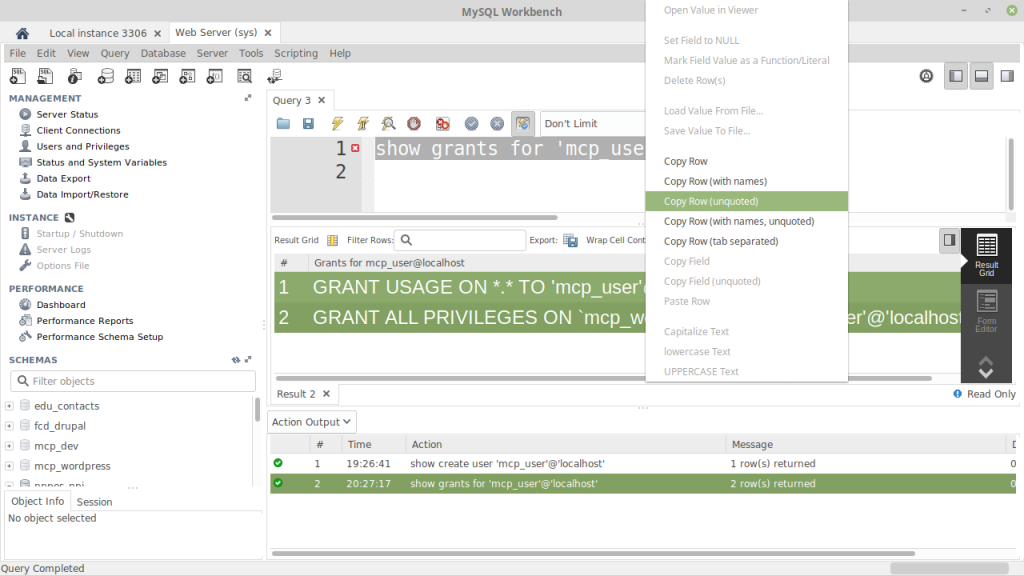
How to keep them happy together.
Running a Low Traffic Website on a Low-End server is a great way to learn. Constrained resources necessitate careful planning of your services. In my journey to keep MySQL from crashing due to memory constraints, these two items fixed the problem.
I manage my own web site ( this site ) as a means to learn and grow my technical know-how. It does not generate any revenue, yet. As a result, I spend the least amount of money on it as possible resulting in the most anemic server. At the writing of this article, my site was slowing to a crawl and MySQL was regularly crashing. Inspecting the processes that where running I found that kswapd, the swap file daemon, was chewing on 50% of my CPU time. It was time for a beginner’s lesson in resource management.
Put MySQL on a Diet
WordPress uses MyISAM as the default storage mechanism. On my distribution InnoDB is included in the default setup. It is not needed for WordPress. As I am only running WordPress on this server I decided to remove InnoDB and free up some memory.
To remove InnoDB support you will need to find your mysql.cnf. More specifically you will need to find the instance that is being used by MySQL. I am running Ubuntu 18.x on my server. Ubuntu is a Debian based system so my configuration file is located here:
/etc/mysql/mysql.conf.d
The MySQL configuration file uses sections denoted with brackets []. For example., there are two sections one name [mysqld_safe] and one called [mysqld]. The sections are completed at the start of the next section.
Place the following command anywhere after the [mysqld] but before the next []
ignore-builtin-innodb
You can now restart the MySQL service with one of the following commands:
service mysql restart
systemctl restart mysql
sudo /etc/init.d/mysql start
Break up the Apache Party
When I checked in on Apache using the command top.I had 26 processes running for Apache. My website just simply isn’t popular and not so important that it needs that much attention. The spammers and search engine bots can wait. Maybe someday I will need more resources for connections but not today.
With the version of Apache2 I am running on a Debian based system the configuration can be found in the mods-available sub-directory. However is you work from the mods-enabled directory you will see a smaller sub-set of choices. You will also answer the question of whether or not the mod you are configuring is actually enabled simply by seeing it in the directory.
To tame Apache bring up the configuration file in your favorite editor, mine nano.
sudo nano /etc/apache2/mods-enable/mpm-prefork.conf
I changed the following to lines to experiment on performance:
MaxSpareServers 8 MaxRequestWorkers 10
Squeeking in under the wire
These two tasks have moved my server sentiment from annoying to hopeful. This micro-server now sits just below the meager physical memory limit imposed by it’s $3.00 budget. Take a look at my output from top.
top - 09:50:03 up 15:11, 1 user, load average: 2.76, 1.17, 0.91 Tasks: 93 total, 2 running, 52 sleeping, 8 stopped, 0 zombie %Cpu(s): 8.4 us, 7.0 sy, 0.0 ni, 84.0 id, 0.5 wa, 0.0 hi, 0.0 si, 0.0 st KiB Mem : 492640 total, 8576 free, 379640 used, 104424 buff/cache KiB Swap: 524284 total, 267688 free, 256596 used. 67740 avail Mem
I am just getting by with a teeny bit of left-over space. The key bit is kswapd has calmed down and now MySQL is no longer crashing. It may be short-lived but it is a victory for today.
Update 1:
Had to up the MaxRequestWorkers to 25, pages kept timing out.
Update 2:
Trying to find the lowest number of “Starting” and “Spare” servers I can get away with. Starting with one and having three spare.
Update3: Final Update

Looks like I have tamed the beast. I am now sitting at about 100mb free space. The final step was deactivating WordPress Plugins I did not need. I am very glad it worked as I was about to start dis-abling Apache2 mods that WordPress does not use and I am fairly ignorant on that subject, for now.




